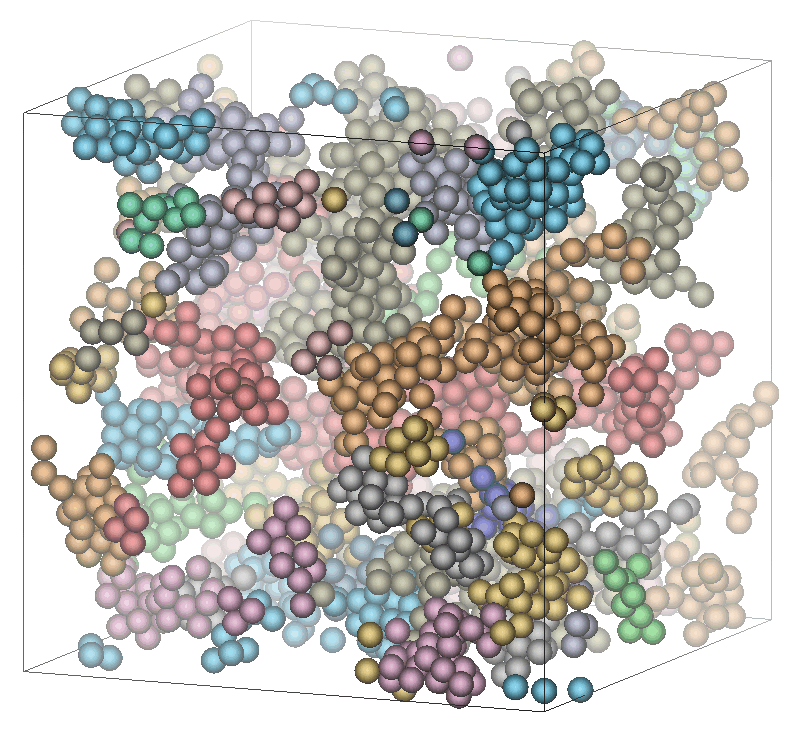TAMEST Blog Series: 2014 O’Donnell Awards Recipients (3rd post by Dr. Thomas Truskett)
The third post in this series was written by Dr. Thomas Truskett, recipient of the 2014 O’Donnell Award in Engineering. Dr. Truskett was recognized for fundamental contributions in three areas—self-assembly at the nanoscale, dynamics of confined liquids, and structural arrest of complex fluids—that are important for applications ranging from biomedical imaging to the delivery of therapeutic proteins.
View Dr. Truskett’s presentation at the TAMEST 2014 Annual Conference.
The 2015 O’Donnell Awards recipients were announced in December through a press release and a video trailer.
Dr. Thomas Truskett, Recipient of the 2014 O’Donnell Award in Engineering
By Thomas Truskett, Ph.D.
Through discovery and innovation, scientists and engineers have a long history of addressing challenges critical to our health, prosperity, and security; i.e., to our quality of life. Since the latter is a priority for the citizens of most communities, a practical question arises. What can be done now (e.g., as a city, state, nation, etc.) to encourage and support a lasting culture of discovery and innovation? More specifically, what actions can be taken to help create and sustain the necessary human capital and infrastructure, as well as the resources and incentives, for these activities to thrive over the long term?
The answers are, of course, community specific and require understanding a complex landscape of political, strategic, and economic considerations. Private investors and companies have financial incentives to support development of promising and profitable technologies, and—all else equal—they favor investments in locations with a healthy business environment, a vibrant technological sector, and a highly skilled workforce, often in close proximity to prestigious tier-one research universities. The latter can be particularly helpful because the intersection of education and the world-class research characteristic of tier-one institutions not only helps to attract and retain top faculty and students, but it also produces a steady stream of graduates educated in a culture of discovery and innovation. More broadly, the tier-one university goals of educating future leaders and creating and disseminating new knowledge complement those of a robust technological sector.

An image of clustering in a simulated model dispersion of therapeutic proteins. Colors identify individual clusters. Image credit: Jon Bollinger and Thomas Truskett, UT Austin.
But that still leaves the question of what to do to cultivate an environment conducive to the long-term success of tier-one research universities? In addition to providing the necessary funding for world-class faculty and facilities (dollar amounts that get repaid many times over by the economic impact of these institutions), further investments need to be made to broadly support a culture of discovery and innovation. In Texas, one successful and forward-thinking example of such an initiative is The Academy of Medicine, Engineering & Science of Texas (TAMEST), founded a decade ago to recognize and bring together the top innovators in the state of Texas, including members of The National Academies as well as rising stars. Through its annual conferences and critical issues forums, as well as through the annual O’Donnell Awards, TAMEST has created something truly unique in Texas: a relevant innovation connection point for top educators, researchers, professionals, industry practitioners, media, and the public.
I experienced first-hand the benefits of TAMEST over the last year after being selected as the recipient of the 2014 O’Donnell Award for Engineering. It’s hard to describe how quickly giving an O’Donnell Awards Lecture at the annual conference in front of hundreds of Academy members and rising stars opens new doors for collaboration. This type of broad exposure is especially important in highly interdisciplinary fields like some of those in which I and my collaborators work, including computational material design and engineering liquid forms of biological therapeutics for at-home treatment of disease. Based on interactions and conversations associated with the O’Donnell Awards and the annual conference, I learned of fascinating complementary approaches, techniques, and ideas from other areas of science and engineering that advanced our research capabilities, and I have also established entirely new collaborations that are broadening the impact of our work. As the new year approaches, I look forward to the chance to return and participate in the annual conference and contribute to what has become a powerful and enlightening interaction forum for discovery and innovation in Texas.
 Dr. Thomas Truskett is Department Chair, Les and Sherri Stuewer Endowed Professor, and Bill L. Stanley Leadership Chair in Chemical Engineering at The University of Texas at Austin (UT Austin).
Dr. Thomas Truskett is Department Chair, Les and Sherri Stuewer Endowed Professor, and Bill L. Stanley Leadership Chair in Chemical Engineering at The University of Texas at Austin (UT Austin).

